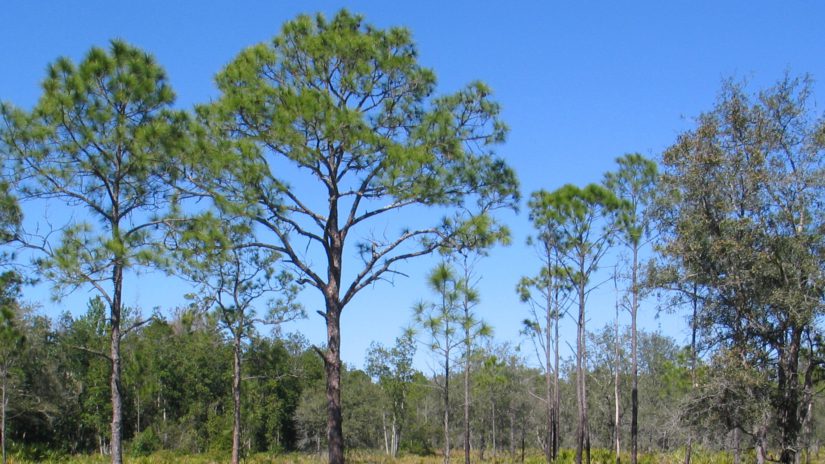Travatine Island Management Area

At A Glance…
- 47 Acres
- Located near Seminole
- Supports tidal swamps, salterns and other natural communities
Background
The Travatine Island Management Area is near the city of Seminole, adjacent to the Intracoastal Waterway and Boca Ciega Bay. Urbanization has caused dramatic changes over the years to this part of the county. The dumping of soil from channel maintenance has expanded the western edge of this island, but historic aerial photographs show the tidal swamps to the south and the salterns (saltwater pools that create salt when the seawater evaporates) were there before those disturbances.
Similar to surrounding areas, this property was slated for development but was protected when attempts to construct a causeway to the island failed. The Pinellas County Board of County Commissioners acquired the property in 1989. This natural area, which is closed to the public, is managed by Parks & Conservation Resources.
Characteristics
The Intracoastal Waterway and surrounding waters control the natural groundwater flow of this management area. Much of the site, which is in the Pinellas-Anclote River Basin, is influenced by tides. Lower-lying areas are permanently flooded. Dredged canals for mosquito control are extensive throughout the tidal swamp in the northern half of the island, but not in the southeastern portion. Elevation ranges up to 25 feet above sea level. The higher elevations are mainly the result of the depositing of dredged material. The soils represent a complex mix of poorly-drained spoils.
The main island is heavily disturbed and is dominated by non-native plants such as Brazilian pepper, Australian pine, punk tree, lantana and Washington fan palm. However, the area also supports a healthy saltern. This unique 3-acre area contains such plants as saltwort, whisk fern, perennial glasswort, slender sea purslane and seaside goldenrod.
Management
Since assuming management of this area, the County has concentrated on controlling non-native species and conducting biological assessments. To date, exotic control has consisted of small-scale efforts, but eventually more extensive clearing could be conducted along the heavily disturbed ridges of the island. As with all small, natural areas surrounded by development, exotics will be an ongoing challenge.
Reintroduction of controlled burning is not currently possible; although, as exotic vegetation is removed, this option will be explored. Additional efforts may include making improvements to the area’s groundwater system, such as the creation of tidal ponds to support fisheries and planting native vegetation.
Value
While The Travatine Island Management Area has special significance to local residents and provides economic and environmental benefits to its neighbors, this natural space provides valuable services to all residents and visitors to the region.
By enhancing native biodiversity, it supports countless organisms ranging from microbes to mammals. For example, a wide variety of wading birds feed and loaf in the estuaries and salterns. This management area also makes important contributions to the coastal environment by protecting areas of relatively undisturbed mangrove swamp and seagrass beds, habitats essential to many marine organisms.
For additional information:
Parks & Conservation Resources
12520 Ulmerton Road
Largo, FL 33774
Phone: (727) 582-2100
Fax: (727) 582-2550